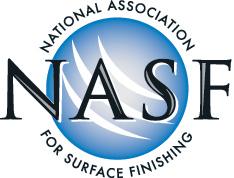| Presented in Partnership with: | |||
 |
 |
 |
 |
Search Results
The 48th William Blum Lecture, Decorative Electroplating: Theory to Explain Rapid Corrosion Due to Calcium Chloride ‘Russian Mud’
Author: Dr. Donald Snyder
Issue: , 2010One would think that over 50-60 years, we would have seen everything when it came to corrosion performance of these parts. But no, there was one more, perhaps unseen until the Cold War had ended, when the Russian mud problem came to light. The increasing numbers of automobiles in Russia after the Cold War made a serious problem more visible and prevalent. Catastrophic failures of copper-nickel-chromium plated layers exhibited large-scale attack of the entire coating, resulting in direct attack of the substrate, with no classic corrosion-delaying side trips into the bright / semi-bright nickel underlayers. Dr. Snyder led us through the studies that had been undertaken, which found the culprit to be the heavy use of calcium chloride in wintertime on Russian roads, in contrast to the sodium chloride used in our road salt. Calcium chloride becomes a literal poultice when mixed with the mud surface that is common on many highways, and is a disastrous combination on decorative chromium coating systems. Even in long-established technology, there remains nothing new under the sun.
 |
 |
 |
 |
 |
| Home | Subscribe | Regulations | Compliance Assistance | News | Resources | Resource Locators | Directories | Online Training | About | Search | Contact | NASF.org |
The information contained in this site is provided for your review and convenience. It is not intended to provide legal advice with respect to any federal, state, or local regulation.
You should consult with legal counsel and appropriate authorities before interpreting any regulations or undertaking any specific course of action.
Please note that many of the regulatory discussions on STERC refer to federal regulations. In many cases, states or local governments have promulgated relevant rules and standards
that are different and/or more stringent than the federal regulations. Therefore, to assure full compliance, you should investigate and comply with all applicable federal, state and local regulations.
